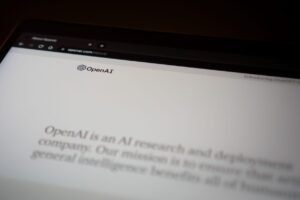Information underload?

First-year students on a course to introduce the library services and how to use the library and information databases. Universidad Nacional Agraria, Nicaragua
“Researchers in developing countries suffer from a lack of access to published research.” This is something I’ve heard several times at international conferences recently. While there ARE issues around, cost, bandwidth, infrastructure, capacity to demand and use research information to name but a few — availability of online journals and books has vastly improved. It seems that awareness of what is available is a significant challenge we still have to overcome. So, to help provide a route for information professionals, researchers and others interested in knowing what is available in developing countries I have compiled a quick list…
First port of call – talk to a librarian at any institution you are interested in. They are a font of all knowledge and in some cases an underused resource — although given the changing demands of the profession will always be busy!
Access programmes
You can also see what resources are available within INASP’s partner or network countries by visiting the INASP website and using the ‘where we work‘ drop down menu. From here you can find: a list of subscribed resources (click the + sign); Country Coordinator details (the individuals who manage our activities locally); and other resources.
It is also important researchers talk to their librarians about the resources available via Research4Life. This is the collective name for AGORA (agriculture), HINARI (medicine and health) OARE (environmental science) and ARDI (technology and innovation). Research4Life is a public-private partnership of the WHO, FAO, UNEP, WIPO, Cornell and Yale Universities and the International Association of Scientific, Technical & Medical Publishers.
EIFL also negotiates highly discounted prices and fair terms of use to increase access to scholarly material which is essential for research and education. See the ‘browse by country‘ page for a list of EIFL-negotiated agreements which are available to each EIFL partner country.
Open Access resources
INASP also maintain a list of free and Open Access resources. Although this list isn’t exhaustive, we have collated information about some of the key resources. We also advocate the active signposting and bookmarking of:
- the Directory of Open Access Journals (DOAJ);
- the Directory of Open Access Books (DOAB);
- and WorldWideScience.org — a one-stop search of national and international scientific databases and portals, covering some 32 national scientific databases and portals from 52 countries
- OpenDOAR — an authoritative directory of academic open access repositories
We must not forget the growth in impact and visibility that locally published research has had thanks to a growing online presence. You can visit Journals Online (JOLs) for a list of portals to peer reviewed journals from developing countries. The Bangladesh Journals Online (BanglaJOL) recently reached 100 journals and offer access to almost 10,000 articles. There is also SciELO — the Scientific Electronic Library Online — to explore.
Other resources
Back in 2011, I worked with Jon Harle at the Association of Commonwealth Universities on a document for scholars returning to Africa which you may find useful. This outlines resources available and how to access them. While this particular document focuses on Africa, there will be Asian and Latin American versions to follow
OK, so the above is merely a starting point. I’m sure there are many resources not listed here that information professionals and researchers will find invaluable, but perhaps this can be the beginning of the dialogue about how we can best share what is available.
There may be challenges associated with the access, awareness and use of what is available, but please let’s make sure that information professionals in the North are not adding to the “digital divide” through not understanding how things have moved on in such a positive way for researchers within developing countries.
If you have any questions about any of this, please leave a comment or get in contact.




